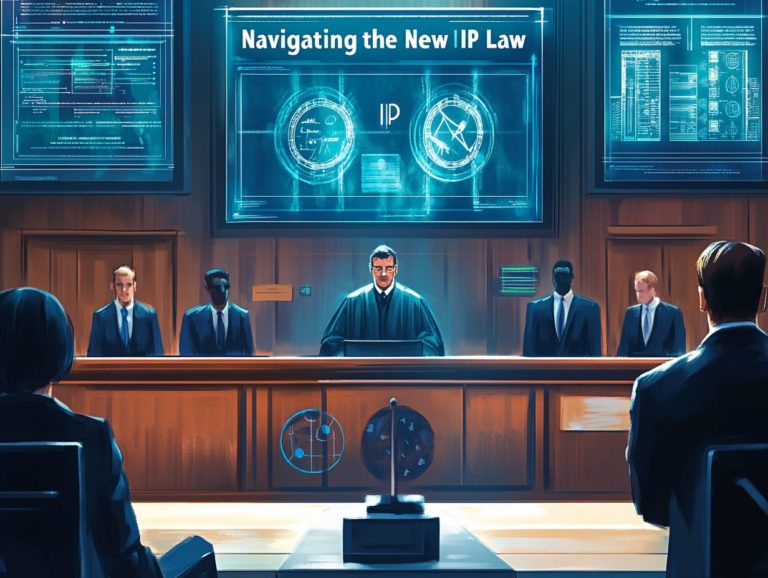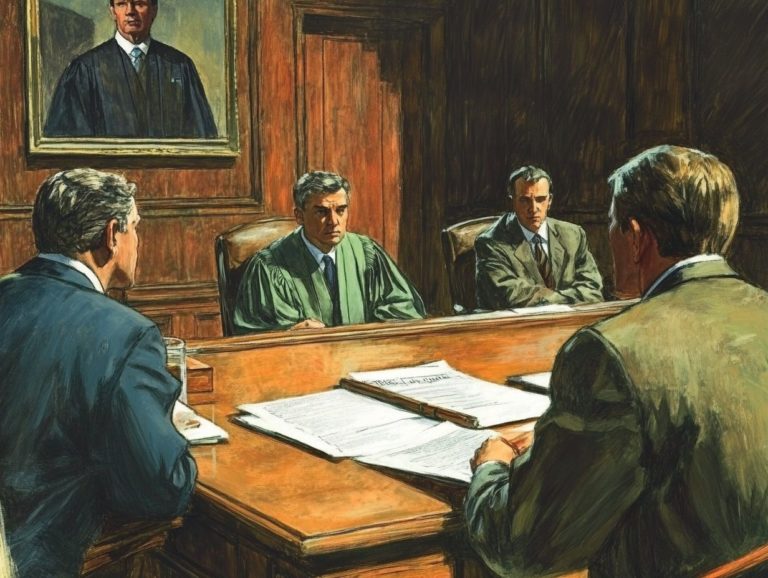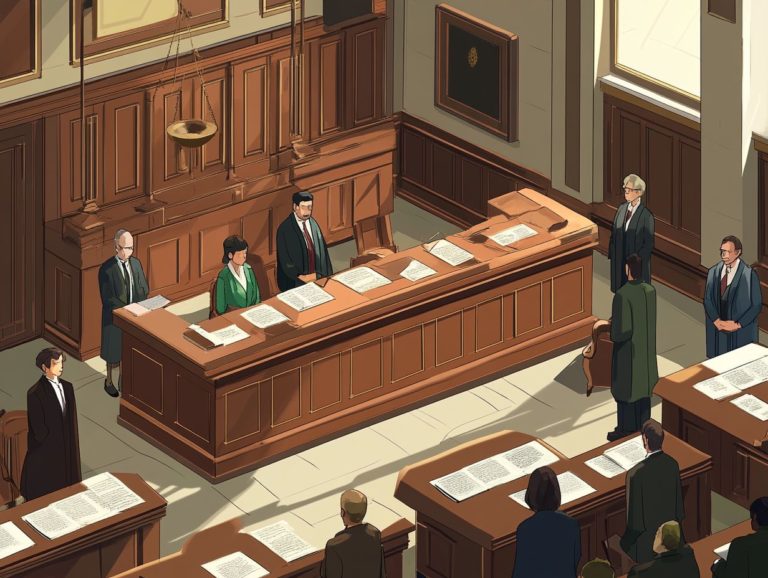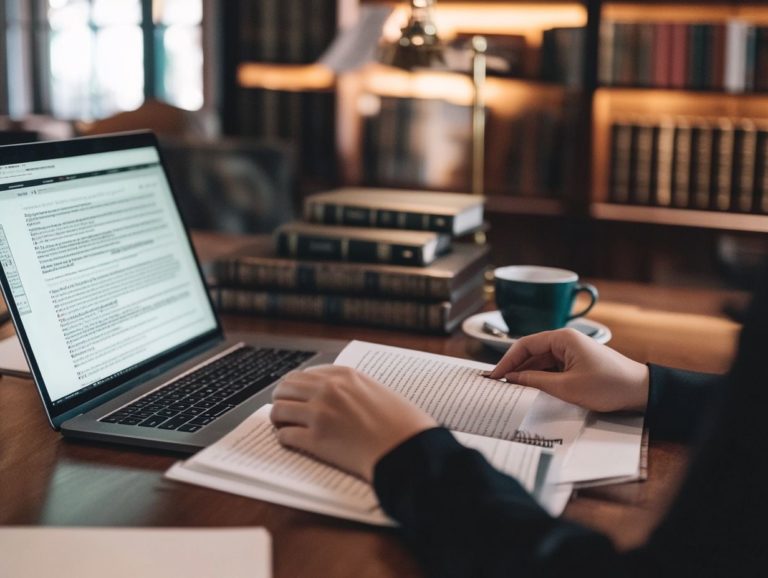Understanding Copyright Infringement in IP Litigation
Copyright infringement is a significant concern in intellectual property law that impacts creators, businesses, and consumers alike.
Let s dive into the various forms of copyright infringement both direct and indirect and clarify the essential elements needed to substantiate a claim. We will examine defenses such as fair use, present real-life examples to highlight the complexities at play, and offer best practices to help you protect your creations.
Whether you are a creator or a business owner, this guide equips you with the knowledge to navigate copyright challenges with confidence and clarity.
Contents
- Key Takeaways:
- Types of Copyright Infringement
- Elements of a Copyright Infringement Claim
- Defenses Against Copyright Infringement
- Common Examples of Copyright Infringement
- Preventing Copyright Infringement
- Frequently Asked Questions
- What is copyright infringement in intellectual property lawsuits?
- What is the difference between copyright infringement and plagiarism?
- How do you determine if copyright infringement has occurred?
- What are the penalties for copyright infringement in intellectual property lawsuits?
- Can a copyright infringement case be settled out of court?
- What steps can I take to protect my copyrighted material from infringement?
Key Takeaways:
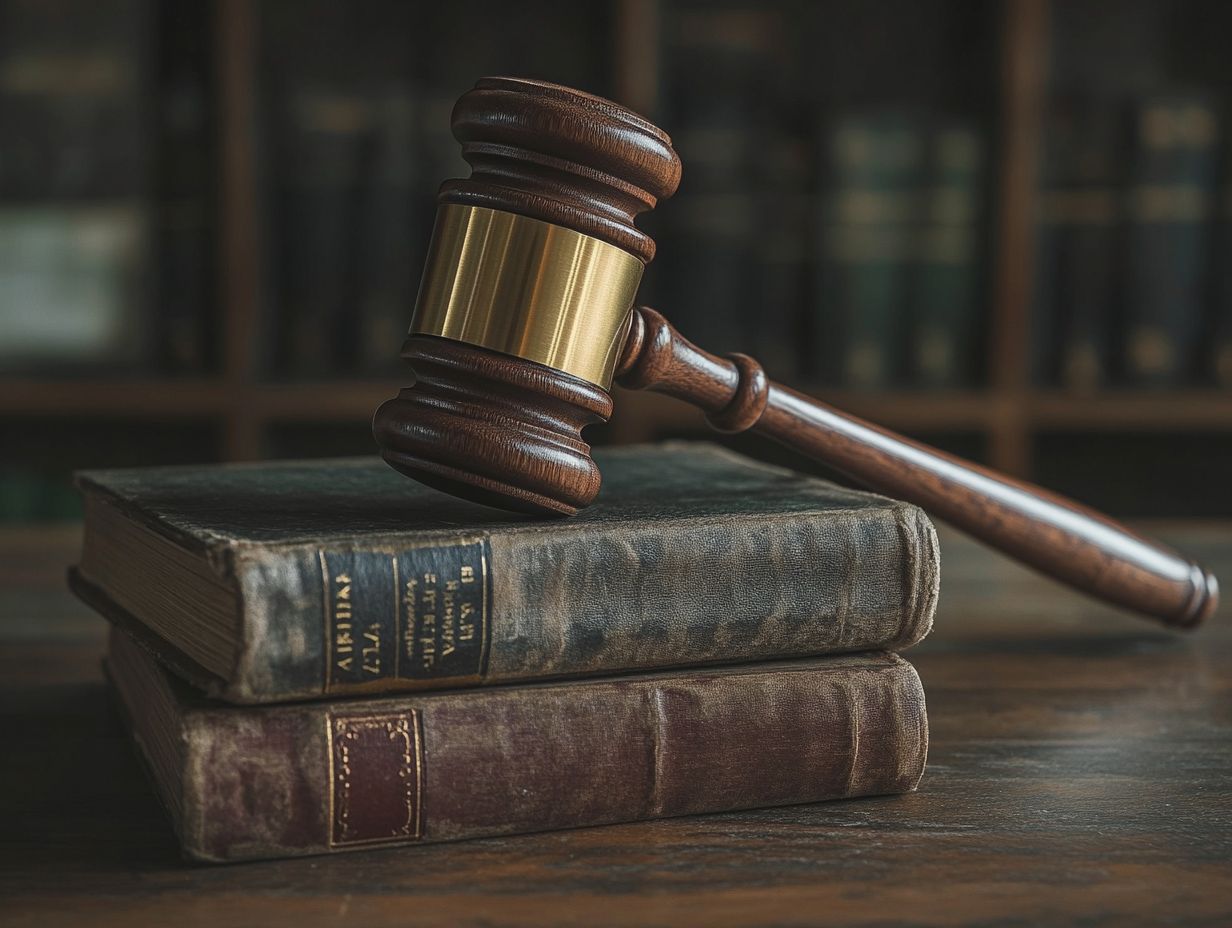
Copyright infringement can occur through direct or indirect means. Understanding the elements of a claim, such as proving ownership and substantial similarity, is essential. Defendants can use defenses like fair use, but it’s crucial to know how to prevent infringement by following best practices for protecting your rights. Don t wait until it’s too late! Knowing your rights is essential.
To protect against copyright infringement, educate yourself on the types of infringement and common examples, such as case studies and real-life situations.
Definition and Overview
Copyright is a vital legal framework designed to protect the legal rights to your ideas and creations. This can span everything from music and literature to art and software.
In the United States, copyright law grants you exclusive rights to reproduce, distribute, and display your works, effectively guarding against unauthorized use or infringement. The primary goal of copyright is to incentivize you to create new works by offering both financial and moral support.
This legal framework shapes the interplay between creativity and commerce. Your intellectual property rights, upheld by Congress, ensure that you receive fair compensation for your efforts, promoting innovation and artistic expression.
Institutions like the Library of Congress highlight the importance of originality, archiving works that preserve cultural heritage and make it accessible to all.
Ultimately, the delicate balance between safeguarding these rights and allowing works to enter the public domain creates an environment where creativity can flourish, benefiting you as a creator and society at large. Take action now to secure your rights and foster your creativity!
Types of Copyright Infringement
Copyright infringement comes in two primary forms: direct infringement and indirect infringement, each carrying its own unique legal implications and requirements for proof.
Grasping these distinctions is essential for both plaintiffs and defendants as they navigate the intricate landscape of copyright law. This understanding is particularly vital in civil court settings, where disputes often arise over the unauthorized reproduction or distribution of copyrighted works, especially regarding the term ‘fair use’ in IP litigation.
Direct and Indirect Infringement
Direct infringement occurs when a copyright holder’s exclusive rights are violated by someone acting without permission. Indirect infringement involves a third party enabling or contributing to this violation, complicating the subsequent legal claims you might face.
Understanding these distinctions is vital for anyone navigating copyright law, as they lay the groundwork for potential legal disputes in creative industries.
Take, for instance, the landmark case of “A&M Records, Inc. v. Napster, Inc.” Here, direct infringement was vividly illustrated by the unauthorized uploading of songs, while Napster faced claims of indirect infringement for facilitating these violations.
In both scenarios, the roles of the plaintiff, typically the copyright owner, and the defendant, who may directly infringe or inadvertently assist in the infringement, are crucial to the dynamics of these legal battles, especially when understanding patent infringement in litigation.
Crafting compelling arguments on either side demands a sharp understanding of how these nuances play out in various contexts.
Elements of a Copyright Infringement Claim
For a successful copyright infringement claim, you must establish several key elements: ownership of a valid copyright, compelling evidence of copying, and a clear demonstration of substantial similarity between your original work and the infringing piece. To navigate this process effectively, refer to understanding IP litigation for a comprehensive guide.
Mastering these components is crucial for plaintiffs pursuing justice and for defendants crafting robust defenses against such claims.
Understanding this framework empowers you to navigate the complexities of copyright law and enhances your position in any legal proceedings.
Proving Ownership and Copying
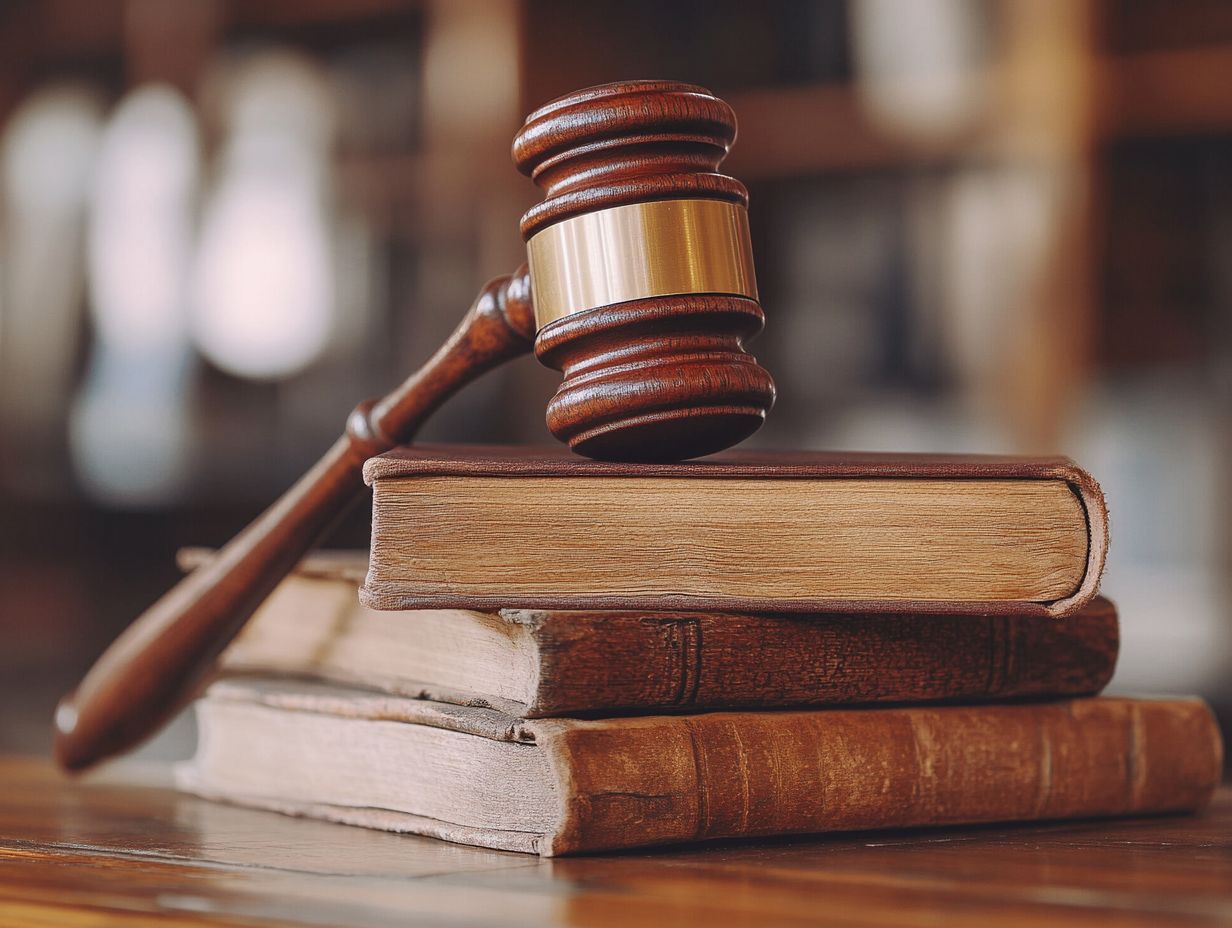
Establishing ownership of a copyright is crucial for asserting your claim. You need to demonstrate that your creative work is protected under copyright law, typically by providing evidence of a registered copyright or other relevant proof.
You must prove the defendant copied your work, a task that can be challenging, especially when direct evidence is scarce. You have various avenues to establish this ownership, such as registering with the Library of Congress. This grants you legal recognition and strengthens your position when seeking damages in infringement cases.
A smart approach involves gathering dated drafts or correspondence to create a clear timeline of your creation. Case studies often reveal that without solid documentation, particularly in music or literature, proving copying can become intricate.
In some disputes, the absence of direct evidence may prompt courts to scrutinize circumstantial evidence, like similarities in style or content. This requires careful examination and can complicate your pathway to a successful claim.
Substantial Similarity and Damages
Substantial similarity plays a pivotal role in copyright infringement cases, assessing whether an ordinary person would recognize the accused work as having been derived from the original.
If substantial similarity is established, you may find yourself in a position to pursue damages. These can encompass actual damages, statutory damages, and even injunctive relief, depending on your case’s nuances.
Courts typically employ various tests to evaluate this concept, including the extrinsic test, which examines specific objective elements like plot, theme, and dialogue, and the intrinsic test, which explores the subjective impressions of an average observer.
The determination can be nuanced, requiring meticulous comparison and analysis of both works involved.
In terms of damages, you can seek compensation based on the economic losses sustained due to the infringement, or you can seize the chance to claim statutory damages, which could significantly boost your recovery, especially if you can demonstrate willfulness.
Calculating these damages necessitates assessing both the market value of the work and the extent of the infringement.
Defenses Against Copyright Infringement
Defenses against copyright infringement claims are essential for you as a defendant, with Fair Use standing out as a key legal argument illustrating that your use of copyrighted material falls within permissible boundaries set by copyright law. Fair Use allows limited use without permission under certain conditions.
You might also explore other defenses, such as licenses, works made for hire, and principles concerning public domain works. Works made for hire refers to works created by an employee as part of their job duties, where the employer owns the rights.
Each of these strategies plays a vital role in safeguarding your rights and interests in the complex realm of copyright law.
Understanding Fair Use and Other Legal Arguments
Fair Use allows you to use limited portions of copyrighted material without permission, particularly for criticism, commentary, news reporting, teaching, scholarship, or research. This privilege comes with specific factors that courts evaluate, including the purpose and character of your use, the nature of the copyrighted work, and the amount used in relation to the whole.
These factors create a framework that courts analyze case by case, focusing not just on your intent but also on the impact your use has on the market for the original work. For example, transformative use where your new work adds new meaning or commentary to the original can strengthen your Fair Use defense. A classic example is when a documentary uses a snippet of a song to provide context and commentary on the music industry.
When it comes to the amount used, courts may find that sometimes, less is indeed more. They might conclude that using only a small portion of a work can still serve significant educational or critical purposes. This balance aims to foster creativity while protecting the rights of original creators.
Common Examples of Copyright Infringement
You ll often encounter examples of copyright infringement across various creative fields, especially in music, film, and literature.
Unauthorized reproduction or distribution of copyrighted materials can lead to serious legal disputes. High-profile cases involving entities like Marvel and Twentieth Century Fox illustrate the challenges and consequences of copyright infringement in today s digital landscape.
Case Studies and Real-Life Examples
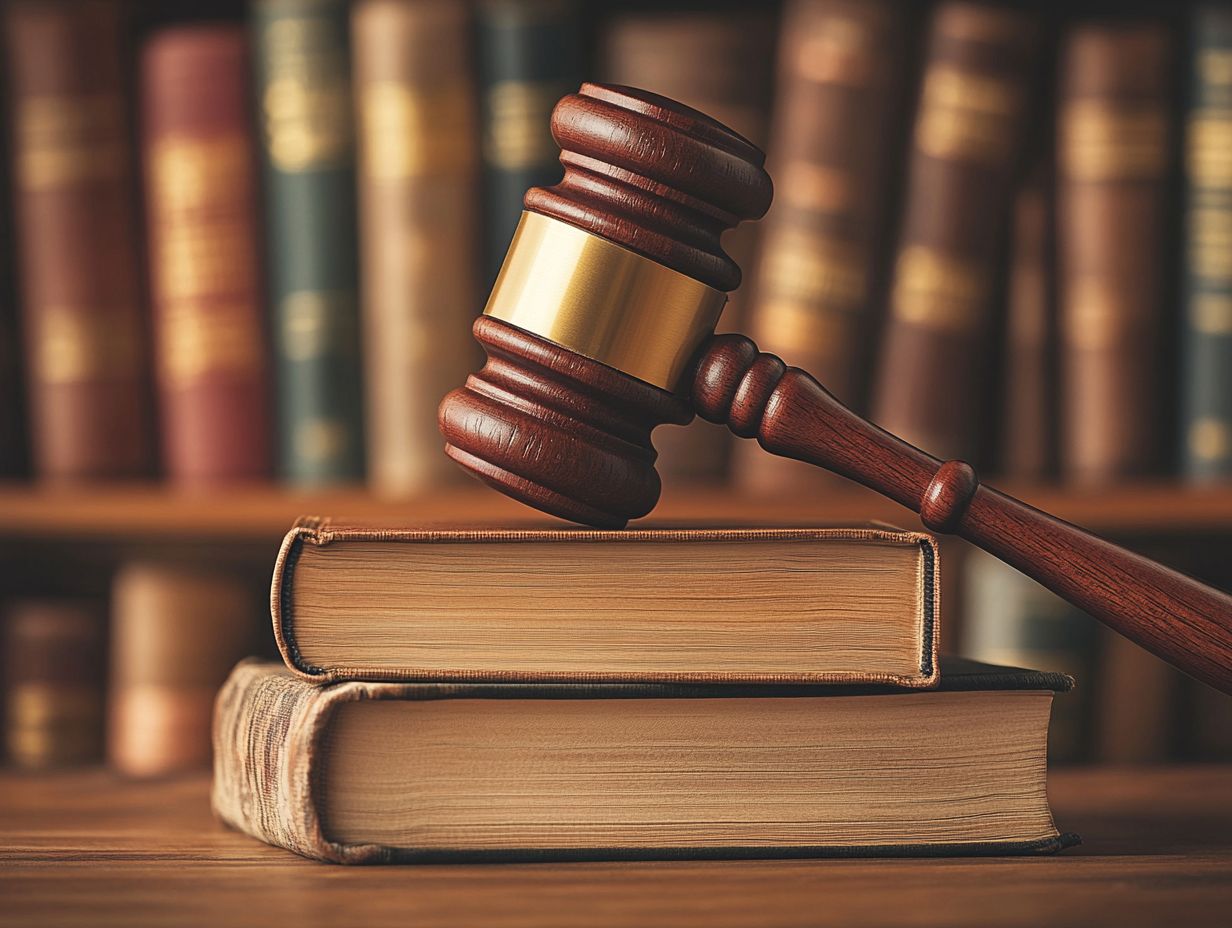
Several high-profile case studies shed light on copyright infringement claims, particularly those involving iconic names like Marvel and DC Comics. These disputes over character ownership and creative works have captured public attention.
These legal battles illustrate the complex relationship between creators and their intellectual property, revealing the nuances of copyright law that will shape the future of original content.
Consider the litigation surrounding characters like Spider-Man and Superman. It highlights the tension between artistic collaboration and legal ownership, raising critical questions about moral rights and derivative works.
As landmark cases unfold, they affect not only the parties involved but also have significant implications for the entire creative industry. The precedents set will influence how creators, publishers, and audiences engage with intellectual property for years to come.
Preventing Copyright Infringement
Preventing copyright infringement is crucial for you as a creator or business. It requires a proactive strategy to protect your intellectual property.
This means understanding your rights and implementing best practices to safeguard your creative works. Start monitoring your content today to protect your rights.
By registering your copyrights, monitoring how your content is used, and educating others, you can significantly reduce the risk of unauthorized use and preserve the integrity of your creations.
Best Practices for Protecting Your Intellectual Property
To effectively safeguard your intellectual property, implement best practices for copyright protection. This includes registering your copyrights with the Library of Congress and utilizing clear licensing agreements.
Maintaining thorough records of your creative works serves as critical evidence in the event of disputes. Regularly monitoring for potential infringement is vital; using digital tools that track unauthorized use can alert you to any misuse before it escalates.
Equally important is educating all stakeholders employees, collaborators, and clients about copyright laws. This fosters an environment that respects intellectual property.
Providing training sessions or easy-to-understand resources empowers everyone to recognize and uphold these rights, ensuring a culture of respect and awareness surrounding copyright.
Frequently Asked Questions
What is copyright infringement in intellectual property lawsuits?
Copyright infringement refers to the unauthorized use or reproduction of copyrighted material without the permission of the copyright owner. This violation infringes on the exclusive rights granted to the copyright holder under the law.
What is the difference between copyright infringement and plagiarism?
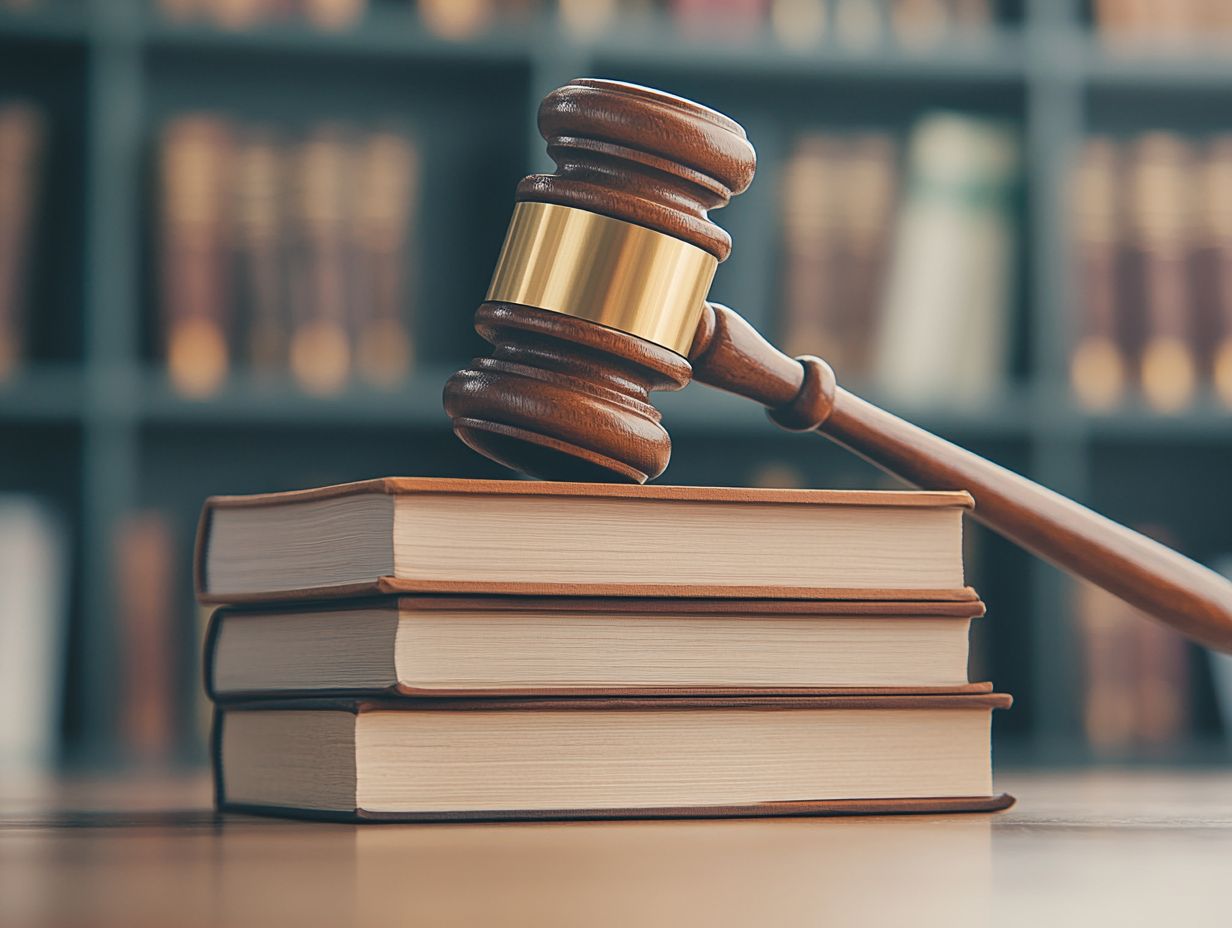
Copyright infringement is a legal issue involving unauthorized use of copyrighted material. In contrast, plagiarism is an ethical concern that involves using someone else’s work without proper credit. Both situations misuse someone else’s work, but copyright infringement has legal consequences, whereas plagiarism may result in academic or professional penalties.
How do you determine if copyright infringement has occurred?
To prove copyright infringement, one must show that the alleged infringer had access to the copyrighted material and that their work is substantially similar to the original. The copyrighted material must also be eligible for protection, and the infringer must have used a significant portion of the work without permission.
What are the penalties for copyright infringement in intellectual property lawsuits?
Understanding the penalties is crucial. They can include hefty monetary damages, such as lost profits and attorney fees. In some cases, the court may also issue an injunction to stop the infringer from continuing to use the copyrighted material.
Can a copyright infringement case be settled out of court?
Yes, a copyright infringement case can often be settled out of court through negotiation. This usually involves the infringer agreeing to pay a specific amount to the copyright owner and possibly altering their work to address the infringement.
What steps can I take to protect my copyrighted material from infringement?
To protect your copyrighted material, register your work with the appropriate copyright office. Use copyright notices on your work, monitor for potential infringements, and take legal action if necessary. It’s also important to understand fair use laws and how they might affect your work. Take charge of your creative work register your copyright today!


